A Review on Non-Newtonian Nanofluid Applications for Convection in Cavities under Magnetic Field
Abstract
:1. Introduction
2. Brief Information on Nanofluids and Non-Newtonian Fluids
2.1. Nanofluids
2.1.1. Thermal Conductivity of Nanofluids
2.1.2. Viscosity of Nanofluids
2.2. Non-Newtonian Fluids
2.2.1. Time-Independent Fluids
2.2.2. Time-Dependent Fluids
2.2.3. Viscoelastic Fluids
3. The Non-Newtonian Nanofluids
4. Magnetohydrodynamics with Non-Newtonian Nanofluids for Convection in Cavities
5. Conclusions
- (1)
- Nanofluid type and solid volume fraction are important in the overall thermal performance enhancement of vented cavities. When considered with other parameters of vented cavity such as port location, thermal performance variations have been reported by using a nanofluid and varying its type.
- (2)
- Hybrid nanofluids are found to be promising as compared to nanofluids with mono-particles in the thermal efficiency of vented cavities.
- (3)
- The magnetic field suppresses multi-recirculations in vented cavities, and depending upon the operating parameters, thermal performance improves with the application of an external magnetic field. Magnetic field inclination also influences the thermal and flow field features, while it can be considered another important parameter in MHD applications for vented cavities.
- (4)
- Most of the studies for convection in cavities under magnetic field effects are numerical ones. Experimental studies are needed to support the numerical studies.
- (5)
- Most of the studies in vented cavities with a magnetic field are for uniform magnetic field cases. Non-uniform and spatially varying magnetic field effects should be considered.
- (6)
- Including nanoparticles in the base fluid under magnetic field for convection in vented cavities, thermal performance improvement has been shown. Even though reliable correlations exist for thermal conductivity and viscosity of nanofluids, there is a lack of experimentally supported correlations for electrical conductivity of nanofluids. Most correlations for electric conductivity of nanofluids use a Maxwell relation, while for accurate modeling of a nanofluid under a magnetic field in vented cavities, more experimental studies are needed for developing accurate relations for electric conductivity.
- (7)
- There are a few studies that considered the non-Newtonian aspects of fluid or nanofluids in vented cavities. Most of the studies considered Newtonian fluid behavior even when using higher nanoparticle loading in the base fluid. Some studies considered theoretical models (e.g., the power-law model) of using nanofluid non-Newtonian behavior in vented cavities.
6. Future Recommendations
- (1)
- In numerical analysis, it is recommended to use available models that fits into one of the existing non-Newtonian models with empirical constants from experimental data.
- (2)
- As the thermal performance changes considerably by using non-Newtonian nanofluids, pressure drop features should also be considered.
- (3)
- More numerical or experimental studies are recommended for using hybrid nanofluids and considering its non-Newtonian behavior with its impact on hydrothermal efficiency.
- (4)
- Vented cavity-flow applications can be extended to be used in renewable energy system technologies, and further performance enhancements and efficiency improvement can be obtained by using hybrid nanofluids. Magnetic field and non-Newtonian fluid behavior parameters can be considered to control the hydrothermal performance by including pumping power features.
- (5)
- Finally, machine learning based optimization techniques may be used alongside a cost analysis of using nanofluids to obtain a cost-effective energy-efficient vented-cavity system design.
Author Contributions
Funding
Institutional Review Board Statement
Informed Consent Statement
Conflicts of Interest
Nomenclature
| Particle radius, (nm) | |
| D | Fractal index |
| Ha | Hartmann number |
| Inter-particle spacing, (nm) | |
| Thermal conductivity, (W m−1 K−1) | |
| Thermal conductivity of fluid (base fluid), (W m−1 K−1) | |
| Thermal conductivity of particles in the suspension, (W m−1 K−1) | |
| K | Consistency parameter, (N sn m−2) |
| Nu | Nusselt number |
| n | Shape factor |
| n | Power-law index |
| Pr | Prandtl number |
| Rayleigh number | |
| Re | Reynolds number |
| Richardson number | |
| shear-rate viscosity, (Pa.s) | |
| Infinite shear-rate- viscosity, (Pa.s) | |
| Viscosity of base fluid, (kg m−1 s−1) | |
| Viscosity of nanofluid, (kg m−1 s−1) | |
| T | Temperature, (K) |
| Slope angle | |
| Particle density, (kg m−3) | |
| Effective volume fraction | |
| Hydrodynamic volume fraction of nanoparticles | |
| Maximum volume fraction | |
| Greek symbols | |
| Shear-rate-viscosity, (Pa.s) | |
| Shear-stress, (Pa) | |
| Dynamic viscosity, (kg m−1 s−1) | |
| Density, (kg m−3) | |
| Volume fraction of nanoparticles |
References
- Das, S.K.; Choi, S.U.; Patel, H.E. Heat transfer in nanofluids—A review. Heat Transf. Eng. 2006, 27, 3–19. [Google Scholar] [CrossRef]
- Choi, S.U.; Eastman, J.A. Enhancing Thermal Conductivity of Fluids with Nanoparticles; No. ANL/MSD/CP-84938; CONF-951135-29; Argonne National Lab.(ANL): Argonne, IL, USA, 1995.
- Wang, L.Q.; Xu, M.; Wei, X. 4 Multiscale Theorems. Adv. Chem. Eng. 2008, 34, 175. [Google Scholar]
- Wang, L.Q. Flows through porous media: A theoretical development at macroscale. Trans. Porous Media 2000, 39, 1. [Google Scholar] [CrossRef]
- Huminic, G.; Huminic, A. Hybrid nanofluids for heat transfer applications—A state-of-the-art review. Int. J. Heat Mass Transf. 2018, 125, 82–103. [Google Scholar] [CrossRef]
- Maxwell, J.C. A Treatise on Electricity and Magnetism, 2nd ed.; Clarendon Press: Oxford, UK, 1881; Volume 1. [Google Scholar]
- Hamilton, R.L.; Crosser, O.K. Thermal conductivity of heterogeneous two-component systems. Ind. Eng. Chem. Fundam. 1962, 1, 187–191. [Google Scholar] [CrossRef]
- Wasp, E.J.; Kenny, J.P.; Gandhi, R.L. Solid-Liquid Flow Slurry Pipeline Transportation, Series on Bulk Materials Handling. Trans. Tech. Publ. 1977, 1, 4. [Google Scholar]
- Wang, X.; Xu, X.; Choi, S.U. Thermal conductivity of nanoparticle-fluid mixture. J. Thermophys. Heat Transf. 1999, 13, 474–480. [Google Scholar] [CrossRef]
- Tseng, W.J.; Wu, C.H. Aggregation, rheology and electrophoretic packing structure of aqueous A12O3 nanoparticle suspensions. Acta Mater. 2002, 50, 3757–3766. [Google Scholar] [CrossRef]
- Putra, N.; Roetzel, W.; Das, S.K. Natural convection of nano-fluids. Heat Mass Transf. 2003, 39, 775–784. [Google Scholar] [CrossRef]
- Tseng, W.J.; Lin, C.L. Effect of dispersants on rheological behavior of BaTiO3 powders in ethanol–isopropanol mixtures. Mater. Chem. Phys. 2003, 80, 232–238. [Google Scholar] [CrossRef]
- Tseng, W.J.; Chen, C.N. Effect of polymeric dispersant on rheological behavior of nickel–terpineol suspensions. Mater. Sci. Eng. A 2003, 347, 145–153. [Google Scholar] [CrossRef]
- Tseng, W.J.; Lin, K.C. Rheology and colloidal structure of aqueous TiO2 nanoparticle suspensions. Mater. Sci. Eng. A 2003, 355, 186–192. [Google Scholar] [CrossRef]
- Kwak, K.Y.; Kim, C.Y. Viscosity and thermal conductivity of copper oxide nanofluid dispersed in ethylene glycol. Korea-Aust. Rheol. J. 2005, 17, 35–40. [Google Scholar]
- Prasher, R.; Song, D.; Wang, J.; Phelan, P. Measurements of nanofluid viscosity and its implications for thermal applications. Appl. Phys. Lett. 2006, 89, 133108. [Google Scholar] [CrossRef]
- Chen, H.; Ding, Y.; He, Y.; Tan, C. Rheological behaviour of ethylene glycol based titania nanofluids. Chem. Phys. Lett. 2007, 444, 333–337. [Google Scholar] [CrossRef]
- Chen, H.; Ding, Y.; Tan, C. Rheological behaviour of nanofluids. New J. Phys. 2007, 9, 367. [Google Scholar] [CrossRef]
- Chevalier, J.; Tillement, O.; Ayela, F. Rheological properties of nanofluids flowing through microchannels. Appl. Phys. Lett. 2007, 91, 233103. [Google Scholar] [CrossRef]
- Chen, H.; Witharana, S.; Jin, Y.; Kim, C.; Ding, Y. Predicting thermal conductivity of liquid suspensions of nanoparticles (nanofluids) based on rheology. Particuology 2009, 7, 151–157. [Google Scholar] [CrossRef]
- Namburu, P.K.; Kulkarni, D.P.; Misra, D.; Das, D.K. Viscosity of copper oxide nanoparticles dispersed in ethylene glycol and water mixture. Exp. Therm. Fluid Sci. 2007, 32, 397–402. [Google Scholar] [CrossRef]
- Namburu, P.K.; Kulkarni, D.P.; Dandekar, A.; Das, D.K. Experimental investigation of viscosity and specific heat of silicon dioxide nanofluids. Micro Nano Lett. 2007, 2, 67–71. [Google Scholar] [CrossRef]
- Chen, L.; Xie, H.; Li, Y.; Yu, W. Nanofluids containing carbon nanotubes treated by mechanochemical reaction. Thermochim. Acta 2008, 477, 21–24. [Google Scholar] [CrossRef]
- Chen, H.; Yang, W.; He, Y.; Ding, Y.; Zhang, L.; Tan, C.; Lapkin, A.A.; Bavykin, D.V. Heat transfer and flow behaviour of aqueous suspensions of titanate nanotubes (nanofluids). Powder Technol. 2008, 183, 63–72. [Google Scholar] [CrossRef]
- Garg, J.; Poudel, B.; Chiesa, M.; Gordon, J.B.; Ma, J.J.; Wang, J.B.; Ren, Z.F.; Kang, Y.T.; Ohtani, H.; Nanda, J.; et al. Enhanced thermal conductivity and viscosity of copper nanoparticles in ethylene glycol nanofluid. J. Appl. Phys. 2008, 103, 074301. [Google Scholar] [CrossRef] [Green Version]
- Lu, W.Q.; Fan, Q.M. Study for the particle’s scale effect on some thermophysical properties of nanofluids by a simplified molecular dynamics method. Eng. Anal. Bound. Elem. 2008, 32, 282–289. [Google Scholar] [CrossRef]
- Murshed, S.M.S.; Leong, K.C.; Yang, C. Investigations of thermal conductivity and viscosity of nanofluids. Int. J. Therm. Sci. 2008, 47, 560–568. [Google Scholar] [CrossRef]
- Schmidt, A.J.; Chiesa, M.; Torchinsky, D.H.; Johnson, J.A.; Boustani, A.; McKinley, G.H.; Nelson, K.A.; Chen, G. Experimental investigation of nanofluid shear and longitudinal viscosities. Appl. Phys. Lett. 2008, 92, 244107. [Google Scholar] [CrossRef] [Green Version]
- Tsai, T.H.; Kuo, L.S.; Chen, P.H.; Yang, C.T. Effect of viscosity of base fluid on thermal conductivity of nanofluids. Appl. Phys. Lett. 2008, 93, 233121. [Google Scholar] [CrossRef] [Green Version]
- Anoop, K.B.; Sundararajan, T.; Das, S.K. Effect of particle size on the convective heat transfer in nanofluid in the developing region. Int. J. Heat Mass Transf. 2009, 52, 2189–2195. [Google Scholar] [CrossRef]
- Anoop, K.B.; Kabelac, S.; Sundararajan, T.; Das, S.K. Rheological and flow characteristics of nanofluids: Influence of electroviscous effects and particle agglomeration. J. Appl. Phys. 2009, 106, 034909. [Google Scholar] [CrossRef]
- Chen, H.; Ding, Y.; Lapkin, A.; Fan, X. Rheological behaviour of ethylene glycol-titanate nanotube nanofluids. J. Nanoparticle Res. 2009, 11, 1513–1520. [Google Scholar] [CrossRef]
- Naik, M.T.; Janardhana, G.R.; Reddy, K.V.K.; Reddy, B.S. Experimental investigation into rheological property of copper oxide nanoparticles suspended in propylene glycol–water based fluids. ARPN J. Eng. Appl. Sci. 2010, 5, 29–34. [Google Scholar]
- Zhu, H.; Li, C.; Wu, D.; Zhang, C.; Yin, Y. Preparation, characterization, viscosity and thermal conductivity of CaCO3 aqueous nanofluids. Sci. China Technol. Sci. 2010, 53, 360–368. [Google Scholar] [CrossRef]
- Phuoc, T.X.; Massoudi, M.; Chen, R.H. Viscosity and thermal conductivity of nanofluids containing multi-walled carbon nanotubes stabilized by chitosan. Int. J. Therm. Sci. 2011, 50, 12–18. [Google Scholar] [CrossRef]
- Pastoriza-Gallego, M.J.; Casanova, C.; Legido, J.A.; Piñeiro, M.M. CuO in water nanofluid: Influence of particle size and polydispersity on volumetric behaviour and viscosity. Fluid Phase Equilibria 2011, 300, 188–196. [Google Scholar] [CrossRef]
- Yu, W.; Xie, H.; Li, Y.; Chen, L. Experimental investigation on thermal conductivity and viscosity of aluminum nitride nanofluid. Particuology 2011, 9, 187–191. [Google Scholar] [CrossRef]
- Choi, S.; Zhang, Z.; Keblinski, P. Nanofluids. In Encyclopedia of Nanoscience and Nanotechnology; Nalwa, H., Ed.; American Scientific Publishers: New York, NY, USA, 2004; p. 757. [Google Scholar]
- Peterson, G.; Li, C. Heat and mass transfer in fluids with nanoparticle suspensions. Adv. Heat Transf. 2006, 39, 257. [Google Scholar]
- Das, S.K.; Choi, S.U.; Yu, W.; Pradeep, T. Nanofluids: Science and Technology; John Wiley & Sons: Hoboken, NJ, USA, 2007. [Google Scholar]
- Wen, D.; Ding, Y.; Williams, R. Nanofluids turn up the heat. Chem. Eng. 2005, 771, 32. [Google Scholar]
- Lee, S.; Choi, S.S.; Li, S.A.; Eastman, J.A. Measuring thermal conductivity of fluids containing oxide nanoparticles. J. Heat Transfer. 1999, 121, 280–289. [Google Scholar] [CrossRef]
- Xie, H.; Wang, J.; Xi, T.; Liu, Y.; Ai, F.; Wu, Q. Thermal conductivity enhancement of suspensions containing nanosized alumina particles. J. Appl. Phys. 2002, 91, 4568–4572. [Google Scholar] [CrossRef]
- Murshed, S.M.S.; Leong, K.C.; Yang, C. Enhanced thermal conductivity of TiO2—Water based nanofluids. Int. J. Therm. Sci. 2005, 44, 367–373. [Google Scholar] [CrossRef]
- Eastman, J.A.; Choi, S.U.S.; Li, S.; Yu, W.; Thompson, L.J. Anomalously increased effective thermal conductivities of ethylene glycol-based nanofluids containing copper nanoparticles. Appl. Phys. Lett. 2001, 78, 718–720. [Google Scholar] [CrossRef]
- Patel, H.E.; Das, S.K.; Sundararajan, T.; Sreekumaran Nair, A.; George, B.; Pradeep, T. Thermal conductivities of naked and monolayer protected metal nanoparticle based nanofluids: Manifestation of anomalous enhancement and chemical effects. Appl. Phys. Lett. 2003, 83, 2931–2933. [Google Scholar] [CrossRef] [Green Version]
- Chon, C.H.; Kihm, K.D.; Lee, S.P.; Choi, S.U. Empirical correlation finding the role of temperature and particle size for nanofluid (Al2O3) thermal conductivity enhancement. Appl. Phys. Lett. 2005, 87, 153107. [Google Scholar] [CrossRef]
- Chopkar, M.; Das, P.K.; Manna, I. Synthesis and characterization of nanofluid for advanced heat transfer applications. Scr. Mater. 2006, 55, 549–552. [Google Scholar] [CrossRef]
- Chopkar, M.; Kumar, S.; Bhandari, D.R.; Das, P.K.; Manna, I. Development and characterization of Al2Cu and Ag2Al nanoparticle dispersed water and ethylene glycol based nanofluid. Mater. Sci. Eng. B 2007, 139, 141–148. [Google Scholar] [CrossRef]
- Li, C.H.; Peterson, G.P. The effect of particle size on the effective thermal conductivity of Al2O3-water nanofluids. J. Appl. Phys. 2007, 101, 044312. [Google Scholar] [CrossRef]
- Vajjha, R.S.; Das, D.K. Experimental determination of thermal conductivity of three nanofluids and development of new correlations. Int. J. Heat Mass Transf. 2009, 52, 4675–4682. [Google Scholar] [CrossRef]
- Patel, H.E.; Sundararajan, T.; Das, S.K. An experimental investigation into the thermal conductivity enhancement in oxide and metallic nanofluids. J. Nanoparticle Res. 2010, 12, 1015–1031. [Google Scholar] [CrossRef]
- Kim, S.H.; Choi, S.R.; Kim, D. Thermal Conductivity of Metal-Oxide Nanofluids: Particle Size Dependence and Effect of Laser Irradiation. ASME J. Heat Transf. 2007, 129, 298–307. [Google Scholar] [CrossRef]
- Hong, J.; Kim, S.H.; Kim, D. Effect of laser irradiation on thermal conductivity of ZnO nanofluids. J. Phys. Conf. Ser. 2007, 59, 301. [Google Scholar] [CrossRef]
- Chopkar, M.; Sudarshan, S.; Das, P.K.; Manna, I. Effect of particle size on thermal conductivity of nanofluid. Metall. Mater. Trans. A 2008, 39, 1535–1542. [Google Scholar] [CrossRef]
- Teng, T.P.; Hung, Y.H.; Teng, T.C.; Mo, H.E.; Hsu, H.G. The effect of alumina/water nanofluid particle size on thermal conductivity. Appl. Therm. Eng. 2010, 30, 2213–2218. [Google Scholar] [CrossRef]
- Mintsa, H.A.; Roy, G.; Nguyen, C.T.; Doucet, D. New temperature dependent thermal conductivity data for water-based nanofluids. Int. J. Therm. Sci. 2009, 48, 363–371. [Google Scholar] [CrossRef]
- He, Y.; Jin, Y.; Chen, H.; Ding, Y.; Cang, D.; Lu, H. Heat transfer and flow behaviour of aqueous suspensions of TiO2 nanoparticles (nanofluids) flowing upward through a vertical pipe. Int. J. Heat Mass Transf. 2007, 50, 2272–2281. [Google Scholar] [CrossRef]
- Yu, W.; Xie, H.; Chen, L.; Li, Y. Investigation on the thermal transport properties of ethylene glycol-based nanofluids containing copper nanoparticles. Powder Technol. 2010, 197, 218–221. [Google Scholar] [CrossRef]
- Li, C.H.; Peterson, G.P. Experimental investigation of temperature and volume fraction variations on the effective thermal conductivity of nanoparticle suspensions (nanofluids). J. Appl. Phys. 2006, 99, 084314. [Google Scholar] [CrossRef]
- Syam Sundar, L.; Sharma, K.V. Thermal conductivity enhancement of nanoparticles in distilled water. Int. J. Nanoparticles 2008, 1, 66–77. [Google Scholar] [CrossRef]
- Sundar, L.S.; Sharma, K.V. Experimental determination of thermal conductivity of fluid containing oxide nanoparticles. Int. J. Dyn. Fluids 2008, 4, 57–69. [Google Scholar]
- Li, C.H.; Peterson, G.P. Experimental Studies of Natural Convection Heat Transfer of Al2O3/DIWater Nanoparticle Suspensions (Nanofluids). Adv. Mech. Eng. 2010, 2010, 742739. [Google Scholar] [CrossRef]
- Jha, N.; Ramaprabhu, S. Thermal conductivity studies of metal dispersed multiwalled carbon nanotubes in water and ethylene glycol based nanofluids. J. Appl. Phys. 2009, 106, 084317. [Google Scholar] [CrossRef]
- Xie, H.; Chen, L. Adjustable thermal conductivity in carbon nanotube nanofluids. Phys. Lett. A 2009, 373, 1861–1864. [Google Scholar] [CrossRef]
- Habibzadeh, S.; Kazemi-Beydokhti, A.; Khodadadi, A.A.; Mortazavi, Y.; Omanovic, S.; Shariat-Niassar, M. Stability and thermal conductivity of nanofluids of tin dioxide synthesized via microwave-induced combustion route. Chem. Eng. J. 2010, 156, 471–478. [Google Scholar] [CrossRef]
- Amrollahi, A.; Hamidi, A.A.; Rashidi, A.M. The effects of temperature, volume fraction and vibration time on the thermo-physical properties of a carbon nanotube suspension (carbon nanofluid). Nanotechnology 2008, 19, 315701. [Google Scholar] [CrossRef]
- Yeganeh, M.; Shahtahmasebi, N.; Kompany, A.H.M.A.D.; Goharshadi, E.K.; Youssefi, A.; Šiller, L. Volume fraction and temperature variations of the effective thermal conductivity of nanodiamond fluids in deionized water. Int. J. Heat Mass Transf. 2010, 53, 3186–3192. [Google Scholar] [CrossRef]
- Yu, Q.; Kim, Y.J.; Ma, H. Nanofluids with plasma treated diamond nanoparticles. Appl. Phys. Lett. 2008, 92, 103111. [Google Scholar] [CrossRef]
- Han, Z.H.; Yang, B.; Kim, S.H.; Zachariah, M.R. Application of hybrid sphere/carbon nanotube particles in nanofluids. Nanotechnology 2007, 18, 105701. [Google Scholar] [CrossRef]
- Ho, C.J.; Gao, J.Y. Preparation and thermophysical properties of nanoparticle-in-paraffin emulsion as phase change material. Int. Commun. Heat Mass Transf. 2009, 36, 467–470. [Google Scholar] [CrossRef]
- Kim, D.; Kwon, Y.; Cho, Y.; Li, C.; Cheong, S.; Hwang, Y.; Lee, J.; Hong, D.; Moon, S. Convective heat transfer characteristics of nanofluids under laminar and turbulent flow conditions. Curr. Appl. Phys. 2009, 9, e119–e123. [Google Scholar] [CrossRef]
- Jwo, C.S.; Jeng, L.Y.; Chang, H.; Teng, T.P. Experimental study on thermal conductivity of lubricant containing nanoparticles. Rev. Adv. Mater. Sci. 2008, 18, 660–666. [Google Scholar]
- Wong, K.F.; Bhshkar, T. Transport properties of alumina nanofluids. ASME Int. Mech. Eng. Congr. Expo. 2006, 47640, 251–260. [Google Scholar]
- Duangthongsuk, W.; Wongwises, S. Measurement of temperature-dependent thermal conductivity and viscosity of TiO2-water nanofluids. Exp. Therm. Fluid Sci. 2009, 33, 706–714. [Google Scholar] [CrossRef]
- Yang, B.; Han, Z.H. Temperature-dependent thermal conductivity of nanorod-based nanofluids. Appl. Phys. Lett. 2006, 89, 083111. [Google Scholar] [CrossRef]
- Buongiorno, J.; Venerus, D.C.; Prabhat, N.; McKrell, T.; Townsend, J.; Christianson, R.; Tolmachev, Y.V.; Keblinski, P.; Hu, L.-W.; Alvarado, J.L.; et al. A benchmark study on the thermal conductivity of nanofluids. J. Appl. Phys. 2009, 106, 094312. [Google Scholar] [CrossRef] [Green Version]
- Xie, H.Q.; Wang, J.C.; Xi, T.G.; Liu, Y. Thermal conductivity of suspensions containing nanosized SiC particles. Int. J. Thermophys. 2002, 23, 571–580. [Google Scholar] [CrossRef]
- Yang, Y.; Grulke, E.A.; Zhang, Z.G.; Wu, G. Thermal and rheological properties of carbon nanotube-in-oil dispersions. J. Appl. Phys. 2006, 99, 114307. [Google Scholar] [CrossRef]
- Glory, J.; Bonetti, M.; Helezen, M.; Mayne-L’Hermite, M.; Reynaud, C. Thermal and electrical conductivities of water-based nanofluids prepared with long multiwalled carbon nanotubes. J. Appl. Phys. 2008, 103, 094309. [Google Scholar] [CrossRef]
- Assael, M.J.; Chen, C.F.; Metaxa, I.; Wakeham, W.A. Thermal conductivity of suspensions of carbon nanotubes in water. Int. J. Thermophys. 2004, 25, 971–985. [Google Scholar] [CrossRef]
- Cherkasova, A.S.; Shan, J.W. Particle aspect-ratio effects on the thermal conductivity of micro-and nanoparticle suspensions. J. Heat Transf. 2008, 130, 082406. [Google Scholar] [CrossRef]
- Jiang, W.; Ding, G.; Peng, H. Measurement and model on thermal conductivities of carbon nanotube nanorefrigerants. Int. J. Therm. Sci. 2009, 48, 1108–1115. [Google Scholar] [CrossRef]
- Lee, K.J.; Yoon, S.H.; Jang, J. Carbon nanofibers: A novel nanofiller for nanofluid applications. Small 2007, 3, 1209–1213. [Google Scholar] [CrossRef]
- Assael, M.J.; Metaxa, I.N.; Arvanitidis, J.; Christofilos, D.; Lioutas, C. Thermal conductivity enhancement in aqueous suspensions of carbon multi-walled and double-walled nanotubes in the presence of two different dispersants. Int. J. Thermophys. 2005, 26, 647–664. [Google Scholar] [CrossRef]
- Gowda, R.; Sun, H.; Wang, P.; Charmchi, M.; Gao, F.; Gu, Z.; Budhlall, B. Effects of particle surface charge, species, concentration, and dispersion method on the thermal conductivity of nanofluids. Adv. Mech. Eng. 2010, 2, 807610. [Google Scholar] [CrossRef] [Green Version]
- Munkhbayar, B.; Tanshen, M.R.; Jeoun, J.; Chung, H.; Jeong, H. Surfactant-free dispersion of silver nanoparticles into MWCNT-aqueous nanofluids prepared by one-step technique and their thermal characteristics. Ceram. Int. 2013, 39, 6415–6425. [Google Scholar] [CrossRef]
- Esfe, M.H.; Saedodin, S.; Biglari, M.; Rostamian, H. Experimental investigation of thermal conductivity of CNTs-Al2O3/water: A statistical approach. Int. Commun. Heat Mass Transf. 2015, 69, 29–33. [Google Scholar] [CrossRef]
- Esfe, M.H.; Wongwises, S.; Naderi, A.; Asadi, A.; Safaei, M.R.; Rostamian, H.; Dahari, M.; Karimipour, A. Thermal conductivity of Cu/TiO2–water/EG hybrid nanofluid: Experimental data and modeling using artificial neural network and correlation. Int. Commun. Heat Mass Transf. 2015, 66, 100–104. [Google Scholar] [CrossRef]
- Mishra, P.C.; Mukherjee, S.; Nayak, S.K.; Panda, A. A brief review on viscosity of nanofluids. Int. Nano Lett. 2014, 4, 109–120. [Google Scholar] [CrossRef] [Green Version]
- Mooney, M. The viscosity of a concentrated suspension of spherical particles. J. Colloid Sci. 1951, 6, 162–170. [Google Scholar] [CrossRef]
- Krieger, I.M.; Dougherty, T.J. A mechanism for non-Newtonian flow in suspensions of rigid spheres. Trans. Soc. Rheol. 1959, 3, 137–152. [Google Scholar] [CrossRef]
- Batchelor, G.K. The effect of Brownian motion on the bulk stress in a suspension of spherical particles. J. Fluid Mech. 1977, 83, 97–117. [Google Scholar] [CrossRef]
- Brinkman, H.C. The viscosity of concentrated suspensions and solutions. J. Chem. Phys. 1952, 20, 571. [Google Scholar] [CrossRef]
- Frankel, N.A.; Acrivos, A. On the viscosity of a concentrated suspension of solid spheres. Chem. Eng. Sci. 1967, 22, 847–853. [Google Scholar] [CrossRef]
- Lundgren, T.S. Slow flow through stationary random beds and suspensions of spheres. J. Fluid Mech. 1972, 51, 273–299. [Google Scholar] [CrossRef]
- Graham, A.L. On the viscosity of suspensions of solid spheres. Appl. Sci. Res. 1981, 37, 275–286. [Google Scholar] [CrossRef]
- Kitano, T.; Kataoka, T.; Shirota, T. An empirical equation of the relative viscosity of polymer melts filled with various inorganic fillers. Rheol. Acta 1981, 20, 207–209. [Google Scholar] [CrossRef]
- Bicerano, J.; Douglas, J.F.; Brune, D.A. Model for the viscosity of particle dispersions. J. Macromol. Sci. 1999, 39, 561–642. [Google Scholar] [CrossRef]
- Cheng, N.S.; Law, A.W.K. Exponential formula for computing effective viscosity. Powder Technol. 2003, 129, 156–160. [Google Scholar] [CrossRef]
- Avsec, J.; Oblak, M. The calculation of thermal conductivity, viscosity and thermodynamic properties for nanofluids on the basis of statistical nanomechanics. Int. J. Heat Mass Transf. 2007, 50, 4331–4341. [Google Scholar] [CrossRef]
- Yu, W.; Choi, S.U.S. The role of interfacial layers in the enhanced thermal conductivity of nanofluids: A renovated Maxwell model. J. Nanopart. Res. 2003, 5, 167. [Google Scholar] [CrossRef]
- Masoumi, N.; Sohrabi, N.; Behzadmehr, A. A new model for calculating the effective viscosity of nanofluids. J. Phys. D Appl. Phys. 2009, 42, 055501. [Google Scholar] [CrossRef]
- Nguyen, C.T.; Desgranges, F.; Roy, G.; Galanis, N.; Maré, T.; Boucher, E.; Mintsa, H.A. Temperature and particle-size dependent viscosity data for water-based nanofluids–hysteresis phenomenon. Int. J. Heat Fluid Flow 2007, 28, 1492–1506. [Google Scholar] [CrossRef]
- Namburu, P.K.; Das, D.K.; Tanguturi, K.M.; Vajjha, R.S. Numerical study of turbulent flow and heat transfer characteristics of nanofluids considering variable properties. Int. J. Therm. Sci. 2009, 48, 290–302. [Google Scholar] [CrossRef]
- Abu-Nada, E. Effects of variable viscosity and thermal conductivity of Al2O3–water nanofluid on heat transfer enhancement in natural convection. Int. J. Heat Fluid Flow 2009, 30, 679–690. [Google Scholar] [CrossRef]
- Masoud Hosseini, S.; Moghadassi, A.; Henneke, D. A new dimensionless group model for determining the viscosity of nanofluids. J. Therm. Anal. Calorim. 2010, 100, 873–877. [Google Scholar] [CrossRef]
- Baghbanzadeh, M.; Rashidi, A.; Soleimanisalim, A.H.; Rashtchian, D. Investigating the rheological properties of nanofluids of water/hybrid nanostructure of spherical silica/MWCNT. Thermochim. Acta 2014, 578, 53–58. [Google Scholar] [CrossRef]
- Nguyen, C.T.; Desgranges, F.; Galanis, N.; Roy, G.; Maré, T.; Boucher, S.; Mintsa, H.A. Viscosity data for Al2O3–water nanofluid—Hysteresis: Is heat transfer enhancement using nanofluids reliable? Int. J. Therm. Sci. 2008, 47, 103–111. [Google Scholar] [CrossRef]
- Asadi, A.; Asadi, M.; Rezaniakolaei, A.; Rosendahl, L.A.; Afrand, M.; Wongwises, S. Heat transfer efficiency of Al2O3-MWCNT/thermal oil hybrid nanofluid as a cooling fluid in thermal and energy management applications: An experimental and theoretical investigation. Int. J. Heat Mass Transf. 2018, 117, 474–486. [Google Scholar] [CrossRef]
- Esfe, M.H.; Zabihi, F.; Rostamian, H.; Esfandeh, S. Experimental Investigation and Model Development of the Non-Newtonian Behavior of CuO-MWCNT-10w40 Hybrid Nano-Lubricant for Lubrication Purposes. J. Mol. Liq. 2018, 249, 677–687. [Google Scholar] [CrossRef]
- Nadooshan, A.A.; Eshgarf, H.; Afrand, M. Measuring the viscosity of Fe3O4-MWCNTs/EG hybrid nanofluid for evaluation of thermal efficiency: Newtonian and non-Newtonian behavior. J. Mol. Liq. 2018, 253, 169–177. [Google Scholar] [CrossRef]
- Motahari, K.; Moghaddam, M.A.; Moradian, M. Experimental Investigation and Development of New Correlation for Influences of Temperature and Concentration on Dynamic Viscosity of MWCNT-SiO2 (20-80)/20w50 Hybrid Nano- Lubricant, Chinese. J. Chem. Eng. 2018, 26, 137–143. [Google Scholar]
- Shahsavar, A.; Saghafian, M.; Salimpour, M.R.; Shafii, M.B. Effect of temperature and concentration on thermal conductivity and viscosity of ferrofluid loaded with carbon nanotubes. Heat Mass Transf. 2016, 52, 2293–2301. [Google Scholar] [CrossRef]
- Nabil, M.F.; Azmi, W.H.; Hamid, K.A.; Mamat, R.; Hagos, F.Y. An experimental study on the thermal conductivity and dynamic viscosity of TiO2-SiO2 nanofluids in water: Ethylene glycol mixture. Int. Commun. Heat Mass Transf. 2017, 86, 181–189. [Google Scholar] [CrossRef]
- Sundar, L.S.; Irurueta, G.O.; Ramana, E.V.; Singh, M.K.; Sousa, A.C.M. Thermal conductivity and viscosity of hybrid nanfluids prepared with magnetic nanodiamond-cobalt oxide (ND-Co3O4) nanocomposite. Case Stud. Therm. Eng. 2016, 7, 66–77. [Google Scholar] [CrossRef] [Green Version]
- Esfe, M.H.; Afrand, M.; Rostamian, S.H.; Toghraie, D. Examination of rheological behavior of MWCNTs/ZnO-SAE40 hybrid nano-lubricants under various temperatures and solid volume fractions. Exp. Therm. Fluid Sci. 2017, 80, 384–390. [Google Scholar] [CrossRef]
- Afrand, M.; Toghraie, D.; Ruhani, B. Effects of temperature and nanoparticles concentration on rheological behavior of Fe3O4–Ag/EG hybrid nanofluid: An experimental study. Exp. Therm. Fluid Sci. 2016, 77, 38–44. [Google Scholar] [CrossRef]
- Soltani, O.; Akbari, M. Effects of temperature and particles concentration on the dynamic viscosity of MgO-MWCNT/ethylene glycol hybrid nanofluid: Experimental study. Phys. E Low-Dimens. Syst. Nanostructures 2016, 84, 564–570. [Google Scholar] [CrossRef]
- Hamid, K.A.; Azmi, W.H.; Nabil, M.F.; Mamat, R.; Sharma, K.V. Experimental investigation of thermal conductivity and dynamic viscosity on nanoparticle mixture ratios of TiO2-SiO2 nanofluids. Int. J. Heat Mass Transf. 2018, 116, 1143–1152. [Google Scholar] [CrossRef]
- Yarmand, H.; Gharehkhani, S.; Shirazi, S.F.S.; Goodarzi, M.; Amiri, A.; Sarsam, W.S.; Alehashem, M.S.; Dahari, M.; Kazi, S. Study of synthesis, stability and thermo-physical properties of graphene nanoplatelet/platinum hybrid nanofluid. Int. Commun. Heat Mass Transf. 2016, 77, 15–21. [Google Scholar] [CrossRef]
- Kumar, M.S.; Vasu, V.; Gopal, A.V. Thermal conductivity and rheological studies for Cu–Zn hybrid nanofluids with various basefluids. J. Taiwan Inst. Chem. Eng. 2016, 66, 321–327. [Google Scholar] [CrossRef]
- Esfe, M.H.; Hajmohammad, M.H. Thermal conductivity and viscosity optimization of nanodiamond-Co3O4/EG (40: 60) aqueous nanofluid using NSGA-II coupled with RSM. J. Mol. Liq. 2017, 238, 545–552. [Google Scholar] [CrossRef]
- Sundar, L.S.; Singh, M.K.; Sousa, A.C. Enhanced heat transfer and friction factor of MWCNT–Fe3O4/water hybrid nanofluids. Int. Commun. Heat Mass Transf. 2014, 52, 73–83. [Google Scholar] [CrossRef]
- Yarmand, H.; Gharehkhani, S.; Shirazi, S.F.S.; Amiri, A.; Montazer, E.; Arzani, H.K.; Sadri, R.; Dahari, M.; Kazi, S. Nanofluid based on activated hybrid of biomass carbon/graphene oxide: Synthesis, thermo-physical and electrical properties. Int. Commun. Heat Mass Transf. 2016, 72, 10–15. [Google Scholar] [CrossRef]
- Mechiri, S.K.; Vasu, V.; Venu Gopal, A. Investigation of thermal conductivity and rheological properties of vegetable oil based hybrid nanofluids containing Cu–Zn hybrid nanoparticles. Exp. Heat Transf. 2017, 30, 205–217. [Google Scholar] [CrossRef]
- Esfe, M.H.; Arani, A.A.A.; Rezaie, M.; Yan, W.M.; Karimipour, A. Experimental determination of thermal conductivity and dynamic viscosity of Ag–MgO/water hybrid nanofluid. Int. Commun. Heat Mass Transf. 2015, 66, 189–195. [Google Scholar] [CrossRef]
- Irgens, F. Rheology and Non-Newtonian Fluids; Springer International Publishing: Cham, Switzerland, 2014. [Google Scholar]
- Teipel, U.; Förter-Barth, U. Rheology of nano-scale aluminum suspensions. Propellants Explos. Pyrotech. 2001, 26, 268–272. [Google Scholar] [CrossRef]
- Hojjat, M.; Etemad, S.G.; Bagheri, R.; Thibault, J. Rheological characteristics of non-Newtonian nanofluids: Experimental investigation. Int. Commun. Heat Mass Transf. 2011, 38, 144–148. [Google Scholar] [CrossRef]
- Kamali, R.; Binesh, A.R. Numerical investigation of heat transfer enhancement using carbon nanotube-based non-Newtonian nanofluids. Int. Commun. Heat Mass Transf. 2010, 37, 1153–1157. [Google Scholar] [CrossRef]
- Kefayati, G.H.R.; Tang, H. Simulation of natural convection and entropy generation of MHD non-Newtonian nanofluid in a cavity using Buongiorno’s mathematical model. Int. J. Hydrog. Energy 2017, 42, 17284–17327. [Google Scholar] [CrossRef]
- Ali, F.H.; Hamzah, H.K.; Egab, K.; Arıcı, M.; Shahsavar, A. Non-Newtonian nanofluid natural convection in a U-shaped cavity under magnetic field. Int. J. Mech. Sci. 2020, 186, 105887. [Google Scholar] [CrossRef]
- Acharya, S.; Dash, S.K. Natural convection in a cavity with undulated walls filled with water-based non-Newtonian power-law CuO–water nanofluid under the influence of the external magnetic field. Numer. Heat Transf. Part A Appl. 2019, 76, 552–575. [Google Scholar] [CrossRef]
- Kherroubi, S.; Benkahla, Y.K.; Boutra, A.; Bensaci, A. Two-and three-dimensional comparative study of heat transfer and pressure drop characteristics of nanofluids flow through a ventilated cubic cavity (part II: Non-Newtonian nanofluids under the influence of a magnetic field). J. Therm. Anal. Calorim. 2020, 147, 1859–1886. [Google Scholar] [CrossRef]
- Aboud, E.D.; Rashid, H.K.; Jassim, H.M.; Ahmed, S.Y.; Khafaji, S.O.W.; Hamzah, H.K.; Ali, F.H. MHD effect on mixed convection of annulus circular enclosure filled with Non-Newtonian nanofluid. Heliyon 2020, 6, e03773. [Google Scholar] [CrossRef] [PubMed]
- Abderrahmane, A.; Hatami, M.; Medebber, M.; Haroun, S.; Ahmed, S.E.; Mohammed, S. Non-Newtonian nanofluid natural convective heat transfer in an inclined Half-annulus porous enclosure using FEM. Alex. Eng. J. 2021, 61, 5441–5453. [Google Scholar] [CrossRef]
- Kefayati, G.R. FDLBM simulation of magnetic field effect on mixed convection in a two sided lid-driven cavity filled with non-Newtonian nanofluid. Powder Technol. 2015, 280, 135–153. [Google Scholar] [CrossRef]
- Mansour, M.A.; Mahdy, A.; Ahmed, S.E. An inclined MHD mixed radiative-convection flow of a micropolar hybrid nanofluid within a lid-driven inclined odd-shaped cavity. Phys. Scr. 2020, 96, 025705. [Google Scholar] [CrossRef]
- Selimefendigil, F.; Chamkha, A.J. Magnetohydrodynamics mixed convection in a lid-driven cavity having a corrugated bottom wall and filled with a non-Newtonian power-law fluid under the influence of an inclined magnetic field. J. Therm. Sci. Eng. Appl. 2016, 8, 021023. [Google Scholar] [CrossRef]
- Selimefendigil, F.; Chamkha, A.J. Magnetohydrodynamics mixed convection in a power law nanofluid-filled triangular cavity with an opening using Tiwari and Das’ nanofluid model. J. Therm. Anal. Calorim. 2019, 135, 419–436. [Google Scholar] [CrossRef]
- Jahanbakhshi, A.; Nadooshan, A.A.; Bayareh, M. Magnetic field effects on natural convection flow of a non-Newtonian fluid in an L-shaped enclosure. J. Therm. Anal. Calorim. 2018, 133, 1407–1416. [Google Scholar] [CrossRef]
- Kefayati, G.R. Simulation of heat transfer and entropy generation of MHD natural convection of non-Newtonian nanofluid in an enclosure. Int. J. Heat Mass Transf. 2016, 92, 1066–1089. [Google Scholar] [CrossRef]
- Benos, L.T.; Karvelas, E.G.; Sarris, I.E. Crucial effect of aggregations in CNT-water nanofluid magnetohydrodynamic natural convection. Therm. Sci. Eng. Prog. 2019, 11, 263–271. [Google Scholar] [CrossRef]
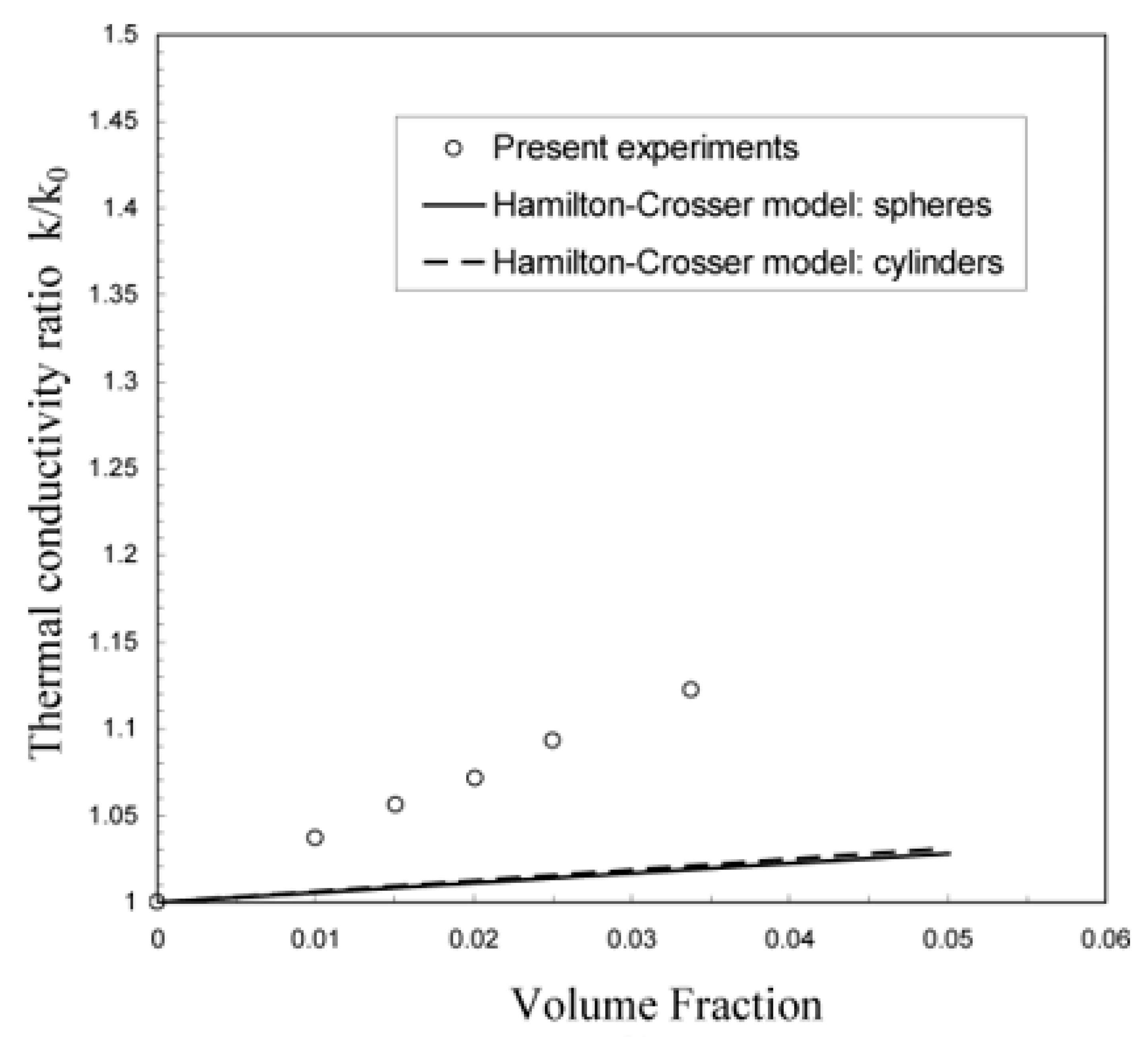


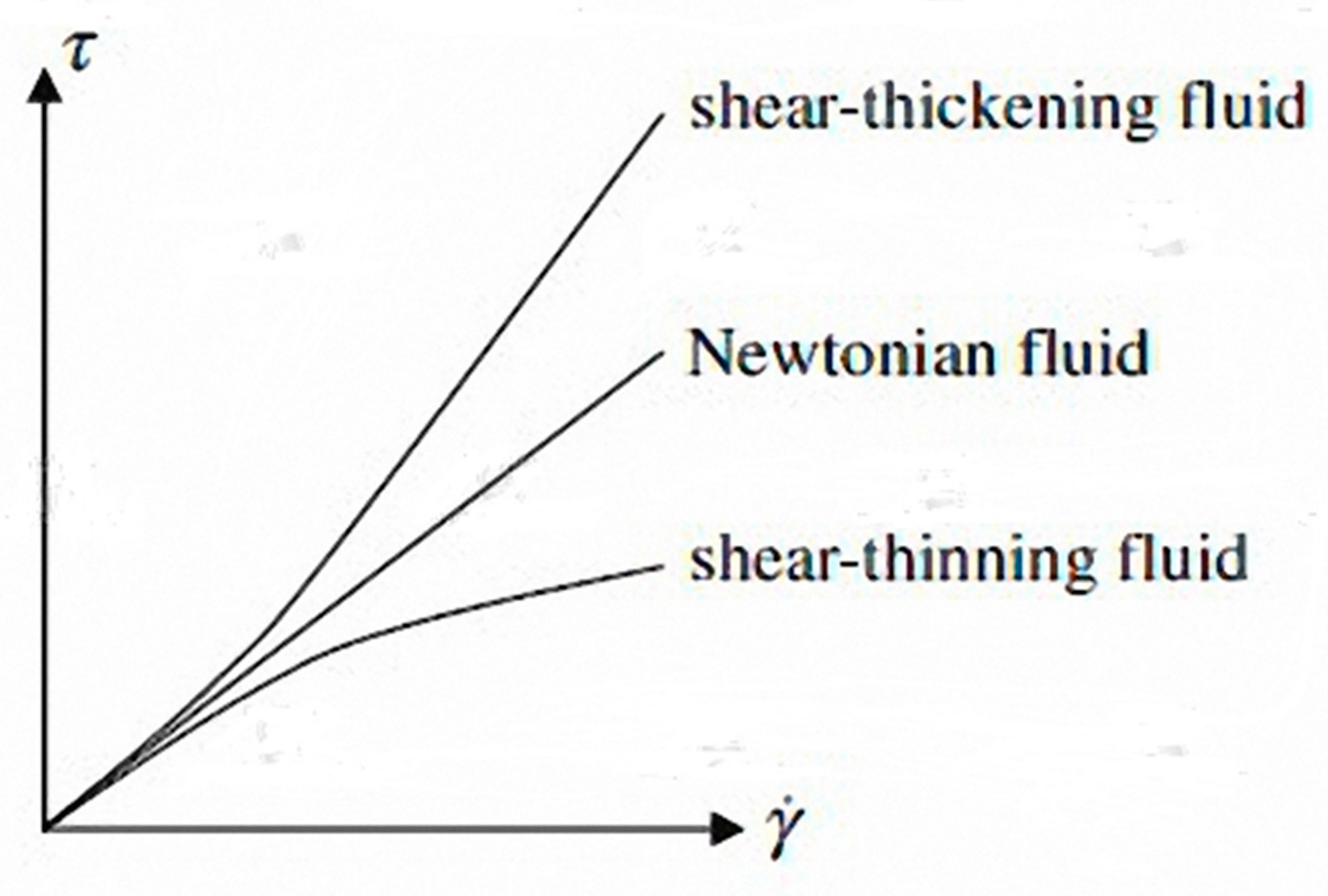
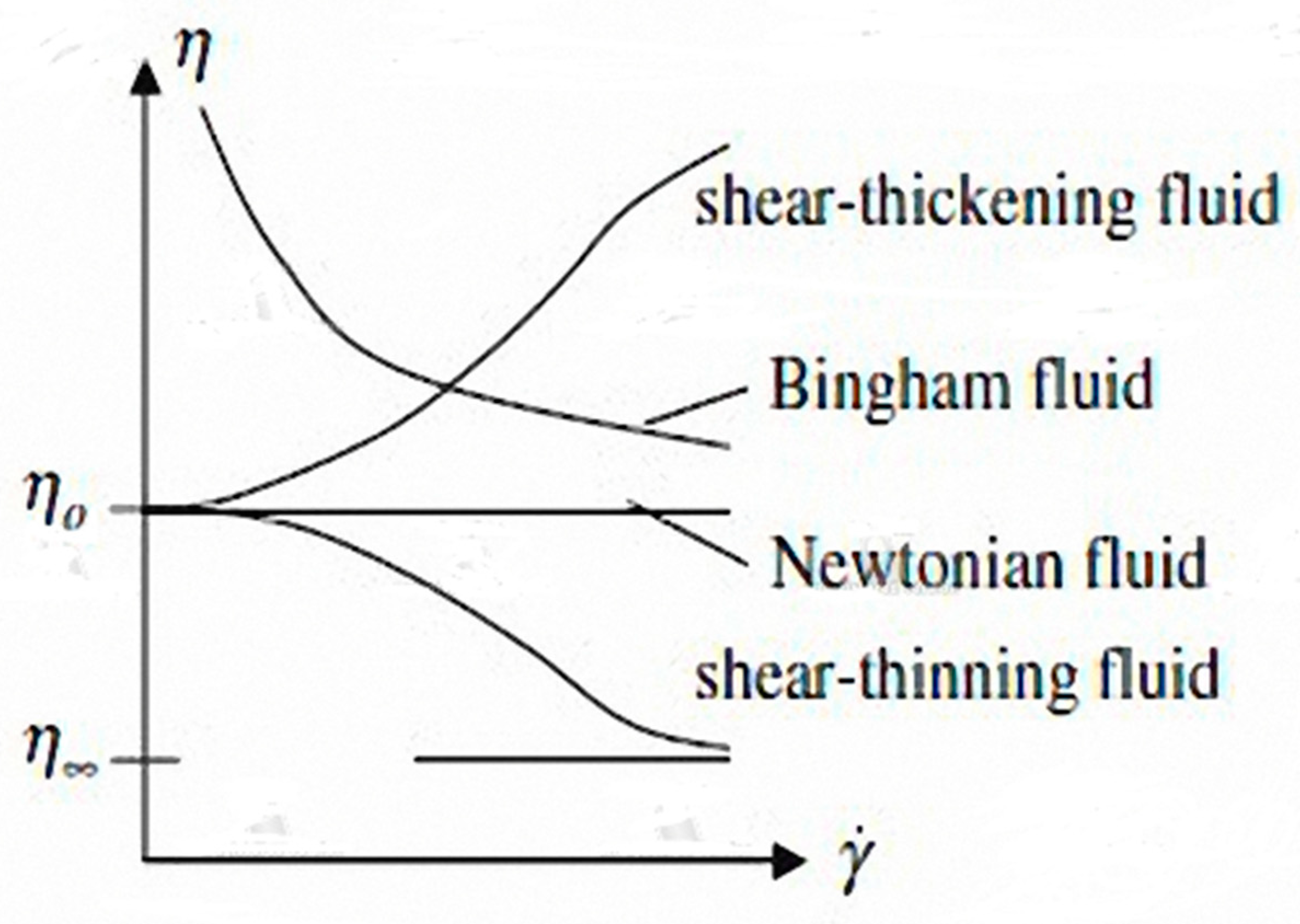
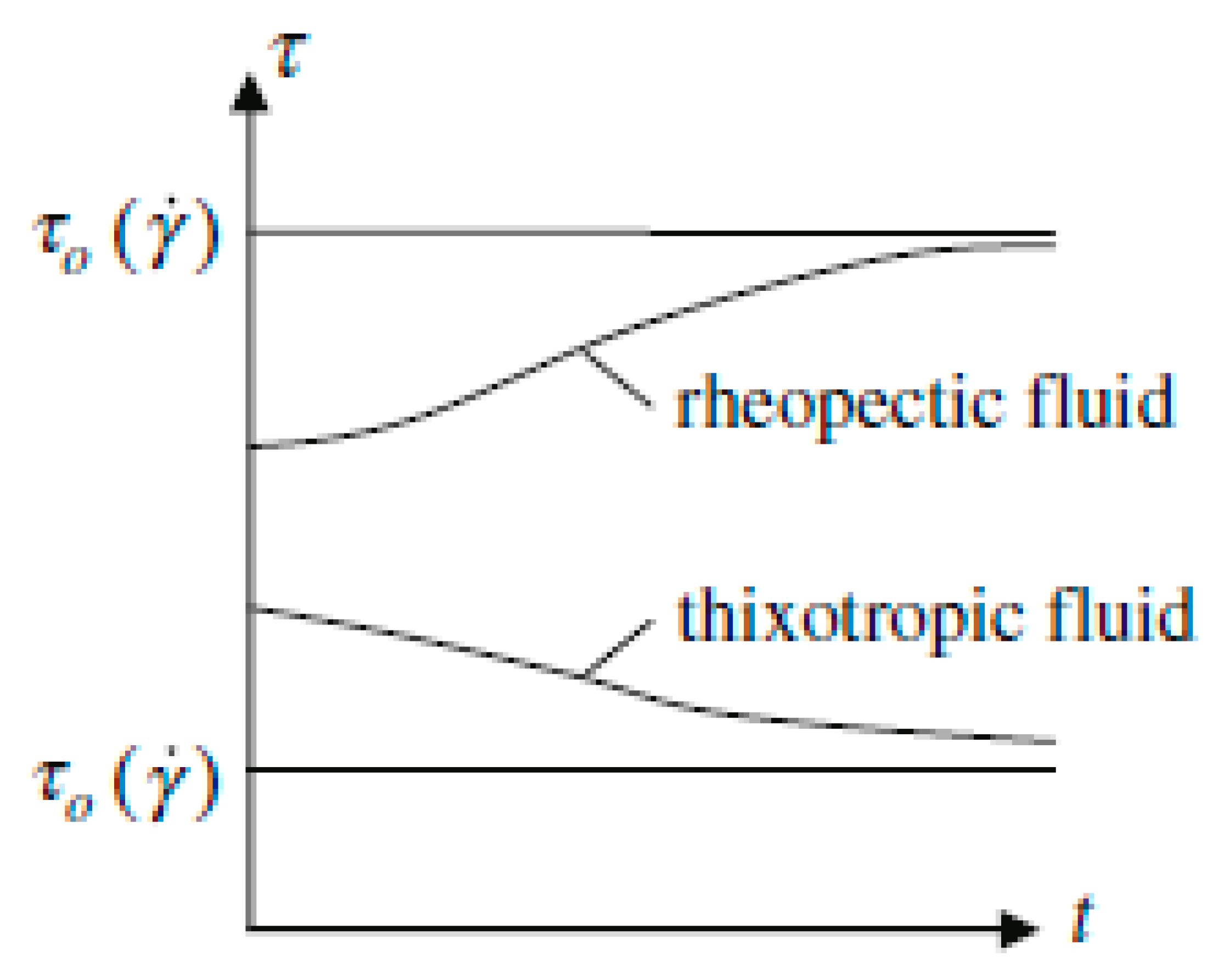
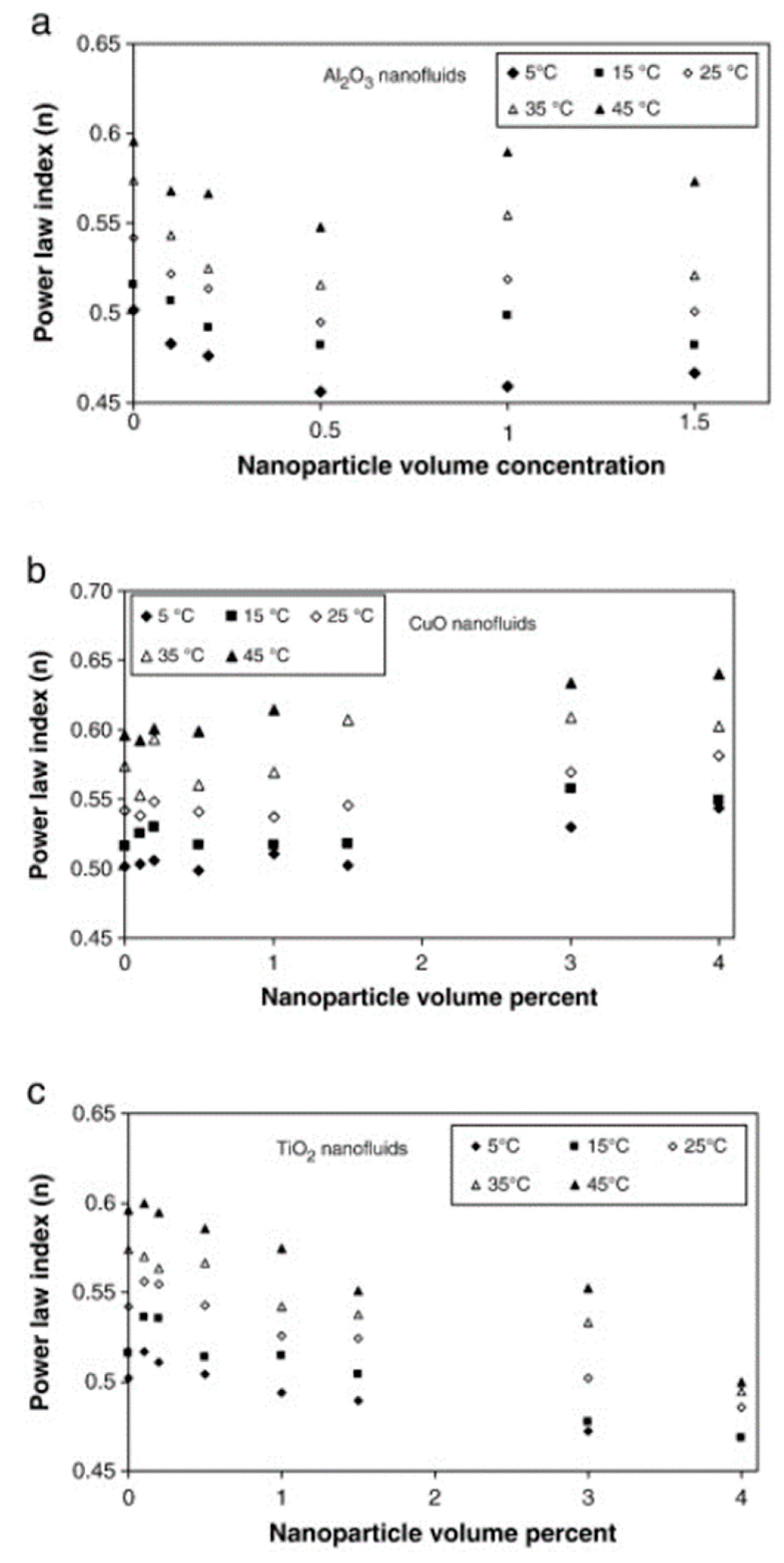


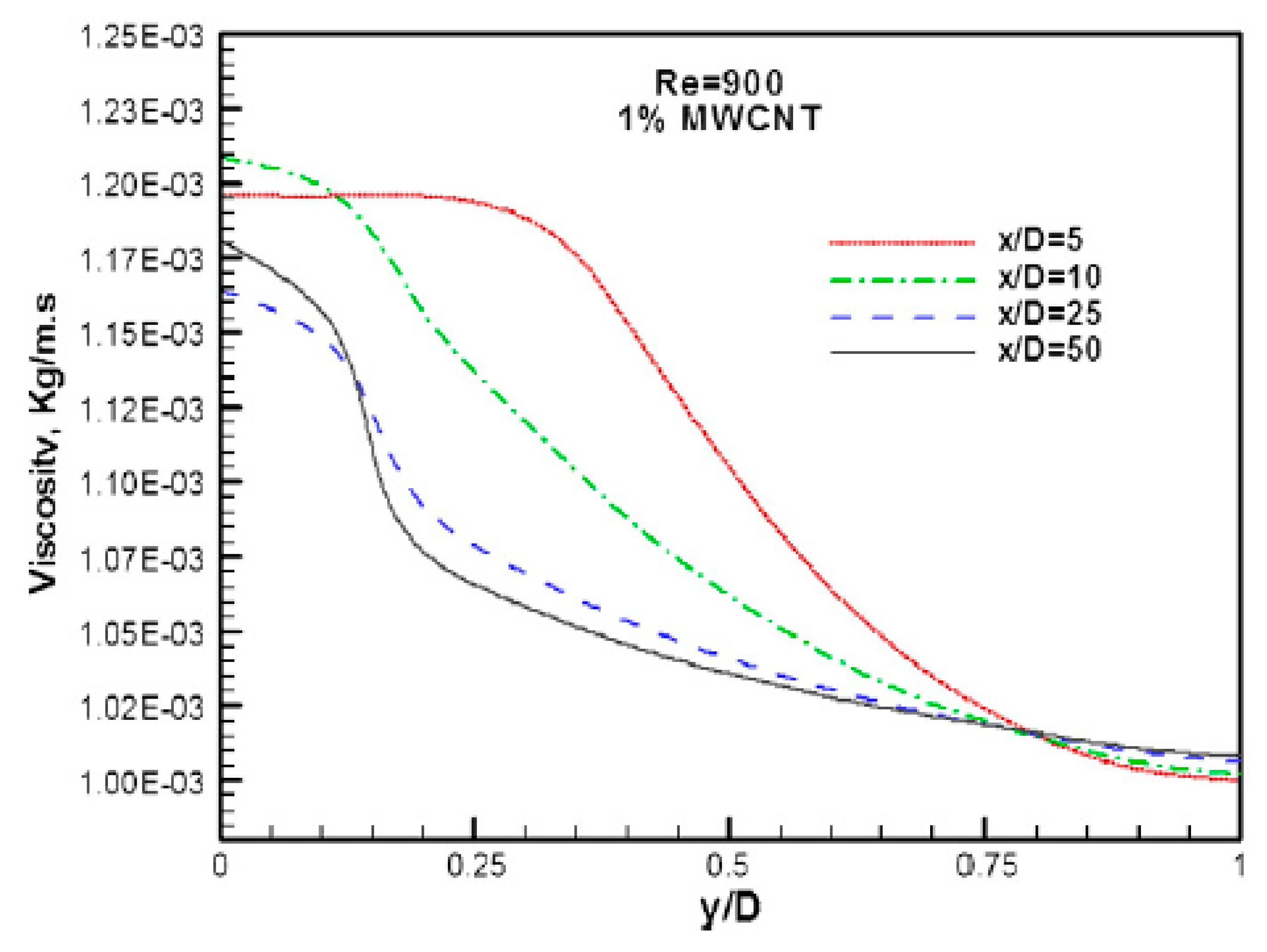
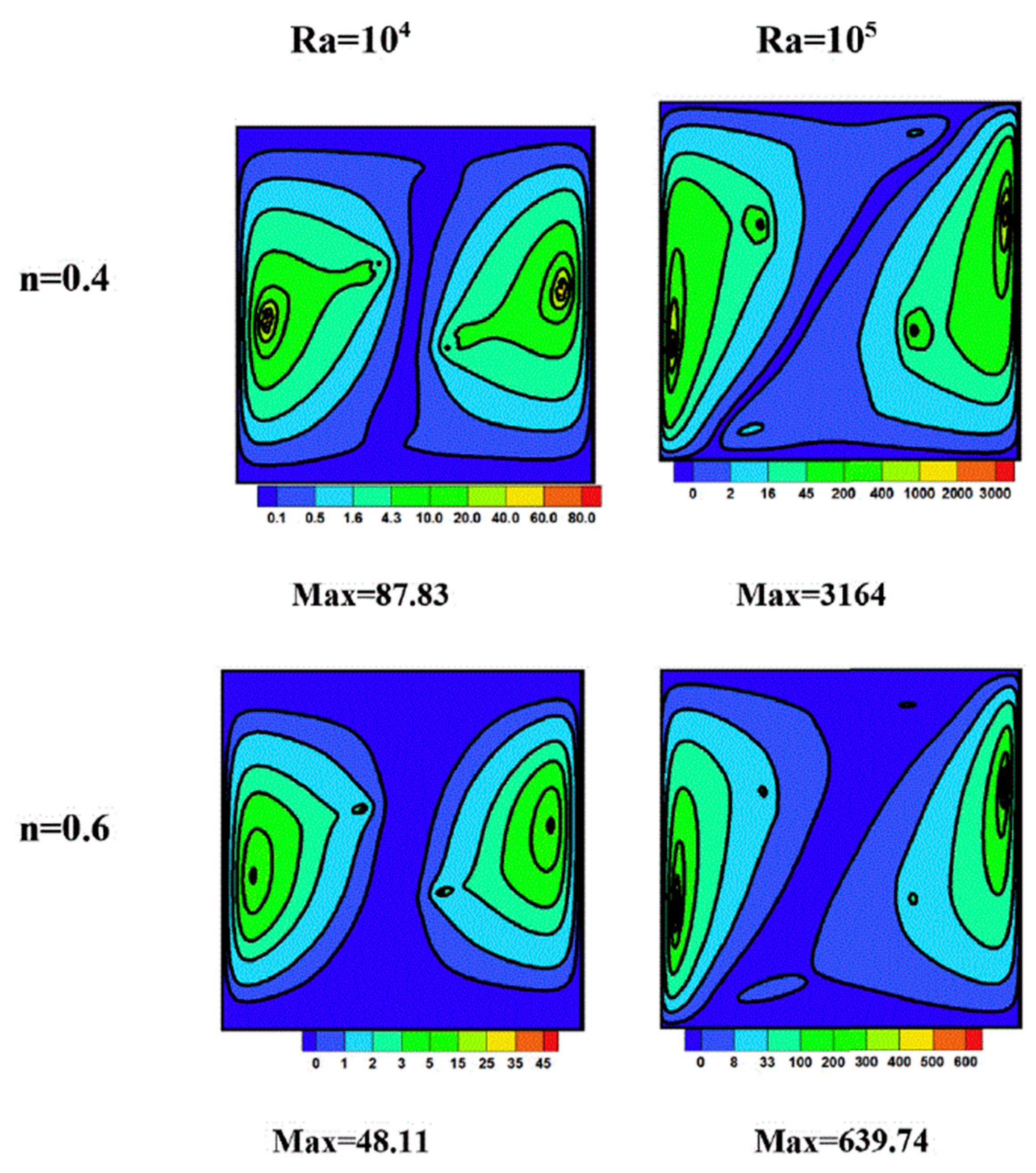
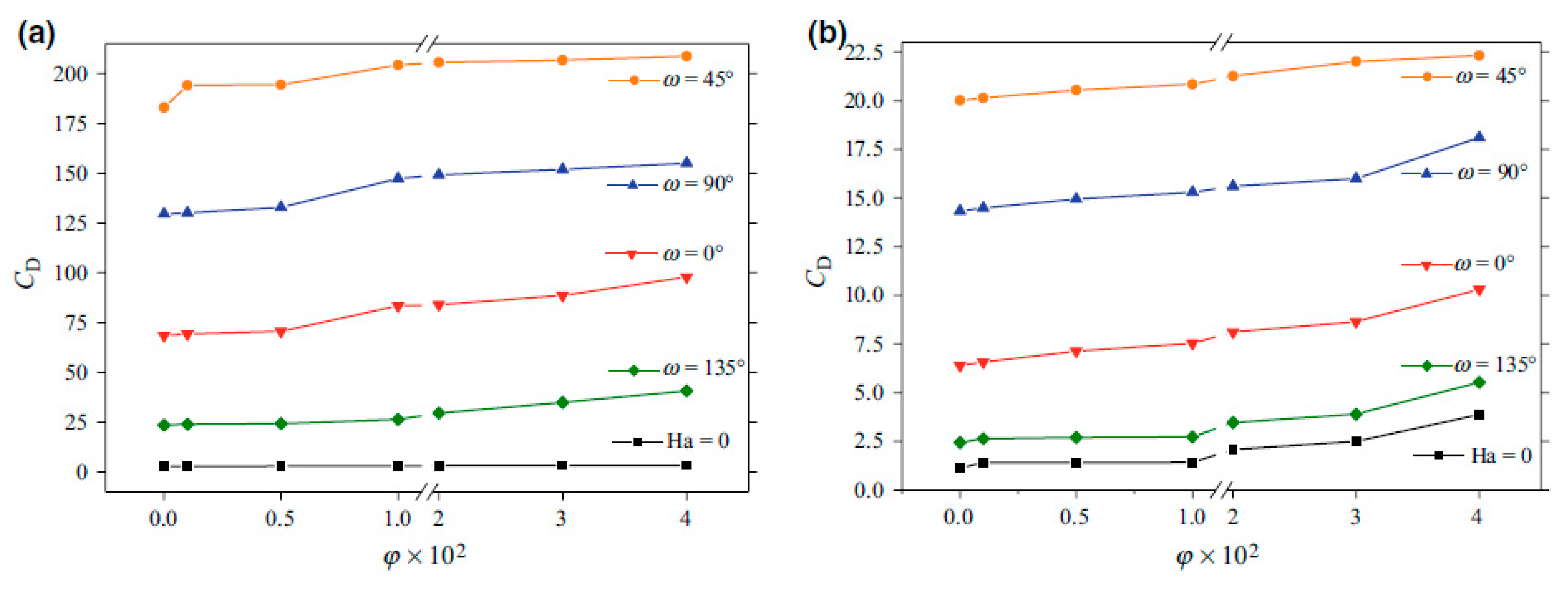
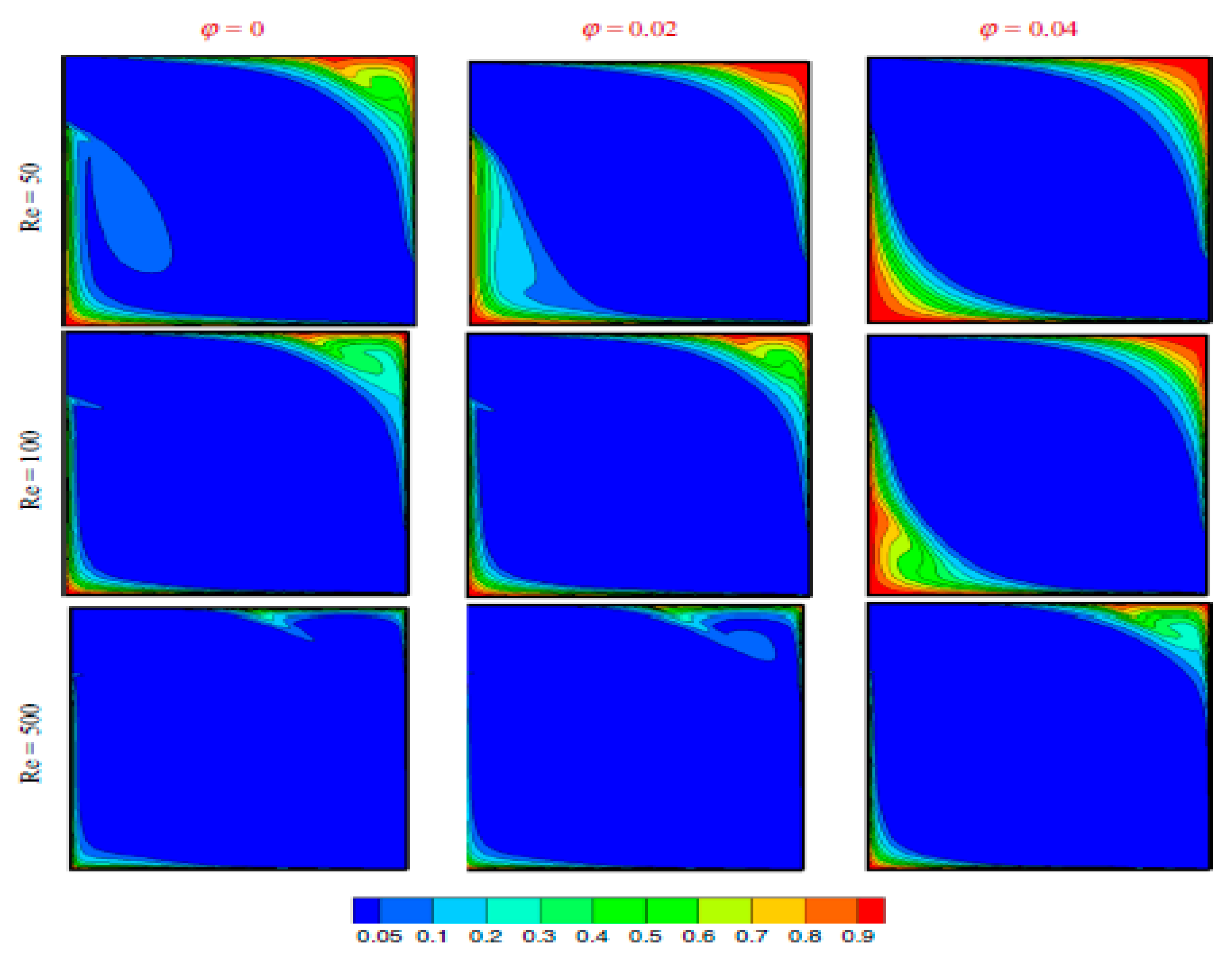


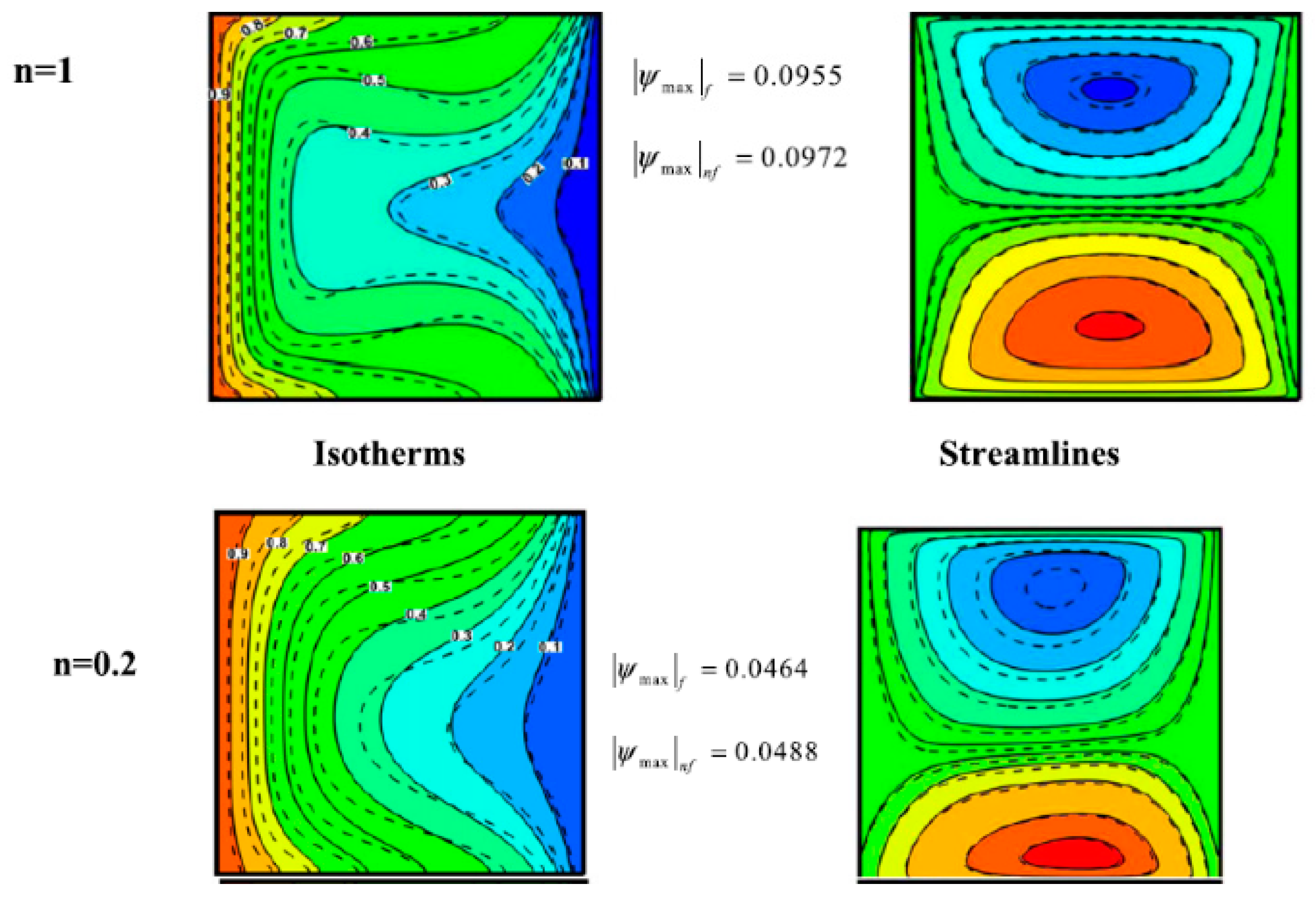
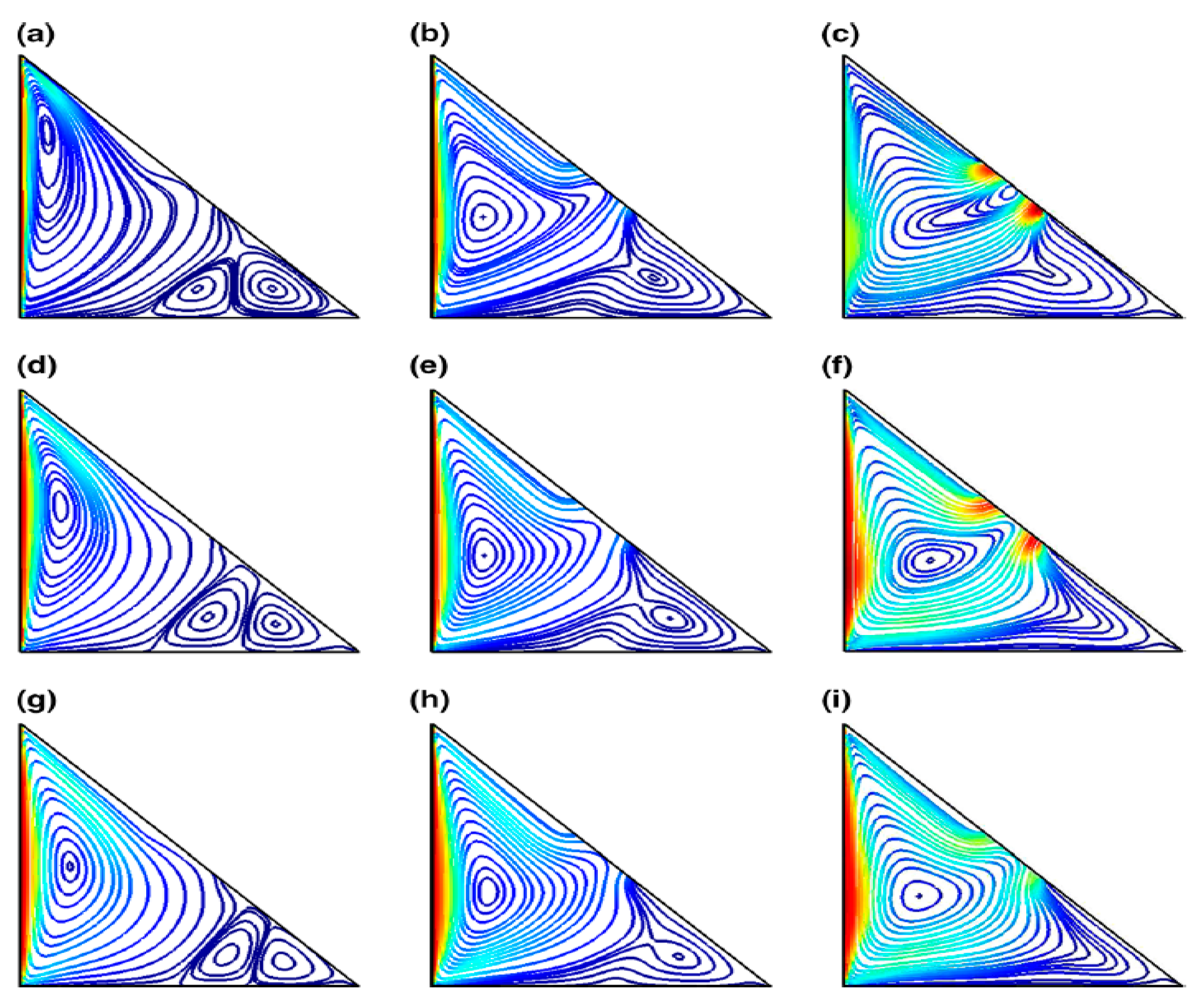
| Authors | Base Fluid | Nanoparticle (D in nm) | Volume Fraction (%) | Preparation Method for Synthesis |
|---|---|---|---|---|
| Wang et al. [9] | DW, EG | Al2O3 (28) | 1–6 | Two-step |
| Tseng et al. [10] | Water | Al2O3 (37) | 0.01–0.16 | Two-step |
| Putra et al. [11] | Water | Al2O3 (131.2) CuO (87.3) | 1, 2, 4 | Two-step |
| Tseng et al. [12] | Ethanol-isopropanol | BaTiO3 (580) | 30–60 | Two-step |
| Tseng et al. [13] | Terpineol | Ni (300) | 3–10 | Two-step |
| Tseng et al. [14] | Water | TiO2 (7–20) | 5–12 | Two-step |
| Kwak et al. [15] | EG | CuO (12) | 0.002 | Two-step |
| Prasher et al. [16] | PG | Al2O3 (27,40, 50) | 0.5, 2, 3 | Two-step |
| Chen et al. [17] | EG | TiO2 (25) | 0.8 wt% | Two-step |
| Chen at al. [18] | EG | TiO2 (25) | 0.1, 0.21, 0.42, 0.86, 1.86 | Two-step |
| Chevalier et al. [19] | Ethanol | SiO2 (35, 94, 190) | 1.4–7 | Two-step |
| Chen at al. [20] | DW | TiO2 (20) | 0.024, 0.6, 1.18 | Two-step |
| Namburu et al. [21] | W-EG (40–60) | CuO (29) | 0–6.12 | Two-step |
| Namburu et al. [22] | W-EG (40–60) | SiO2 (20, 50, 100) | 0–10 | Two-step |
| Chen et al. [23] | DW, EG and glycol | CNTs (15) | 0.2%, 0.6%, 1% | Two-step |
| Chen et al. [24] | DW | TNT (10) | 12%, 24%, 0.6 | Two-step |
| Garg et al. [25] | EG | Cu (200) | 0.4–2 | Single step |
| Lu et al. [26] | Water, EG | Al2O3 (10 and >10) | 5 | Two-step |
| Murshed et al. [27] | DIW, EG | Al2O3 (80, 150), TiO2(15) | 1–5 | Two-step |
| Schmidt et al. [28] | Iso paraffinic PAO and Decane | Al2O3 (40) | 0.25–1 | Two-step |
| Tsai et al. [29] | Diesel oil and PDMS | Fe3O4(10) | 1–4.48 | Two-step |
| Anoop et al. [30] | Water | Al2O3 (45, 150) | 1, 2, 4, 6 wt% | Two-step |
| Anoop et al. [31] | EG; water | Al2O3 (100, 95) | 0.5, 1, 2, 4, 6 | Two-step |
| Anoop et al. [31] | EG | CuO (152) | 0.5, 1, 2, 4, 6 | Two-step |
| Chen et al. [32] | EG | TNT (10), L = 100 nm | 0–8% (mass) | Two-step |
| Chen et al. [20] | EG-Water | TNT (10), L = 100 nm, TiO2 (25) | 0–1.8 | Two-step |
| Naik et al. [33] | PG-water | CuO (<50) | 0.025, 0.1, 0.4, 0.8, 1, 1.25 | Two-step |
| Zhu et al. [34] | DW | CaCO3 (20–50) | 0.12–4.11 | Two-step |
| Phuoc et al. [35] | DW | SiC (<100) | 0.1%, 0.1, 1, 2, 3 | Two-step |
| Pastoriza et al. [36] | Water | CuO (23–37, | 5%–10 wt% | Single-step, two-step |
| Phuoc et al. [35] | Water | MWCNTs (20–30), L = 10–30 μm, | 0.24–1.43 | Two-step |
| Yu et al. [37] | PG;EG | AIN (50) | 1–10 | Two-step |
| Authors | Base Fluid | Nanoparticle | Particle Size (nm) | Volume Fraction (%) | Enhancement in Viscosity (%) |
|---|---|---|---|---|---|
| Nguyen et al. [104,109] | Water | Al2O3 | 36 | 2.1–13 | 10–210 |
| Nguyen et al. [109] | Water | Al2O3 | 47 | 1–13 | 12–430 |
| Wang et al. [9] | DW | Al2O3 | 28 | 1–6 | 9–86 |
| Wang et al. [9] | EG | Al2O3 | 28 | 1.2–3.5 | 7–39 |
| Prasher et al. [16] | PG | Al2O3 | 27 | 0.5–3 | 7–29 |
| Prasher et al. [16] | PG | Al2O3 | 40 | 0.5–3 | 6–36 |
| Prasher et al. [16] | PG | Al2O3 | 50 | 0.5–3 | 5.5–24 |
| Murshed et al. [27] | DIW | Al2O3 | 80 | 1–5 | 4–82 |
| Anoop et al. [30] | Water | Al2O3 | 45 | 2–8 wt% | 1–6 |
| Anoop et al. [30] | Water | Al2O3 | 150 | 2–8 wt% | 1–3 |
| Anoop et al. [31] | Water | Al2O3 | 95 | 0.5–6 | 3–77 |
| Anoop et al. [31] | Water | Al2O3 | 100 | 0.5–6 | 3–57 |
| Anoop et al. [31] | EG | Al2O3 | 100 | 0.5–6 | 5.5–30 |
| Chen et al. [17,18,20] | EG | TiO2 | 25 | 0.1–1.86 | 0.5–23 |
| He et al. [58] | DW | TiO2 | 95, 145, 210 | 0.024–1.18 | 4.11 |
| Chen et al. [20] | Water | TiO2 | 25 | 0.25–1.2 | 3–11 |
| Duangthongsuk and Wongwises [75] | Water | TiO2 | 21 | 0.2–2 | 4–15 |
| Anoop et al. [31] | EG | CuO | 152 | 0.5–6 | 8–32 |
| Pastoriza-Gallego et al. [36] | Water | CuO | 27–37 | 1–10 wt% | 0.5–11.5 |
| Pastoriza-Gallego et al. [36] | Water | CuO | 11 | 1–10 wt% | 2.5–73 |
| Chevalier et al. [19] | Ethanol | SiO2 | 35 | 1.2–5 | 15–95 |
| Chevalier et al. [19] | Ethanol | SiO2 | 94 | 1.4–7 | 12–85 |
| Chevalier et al. [19] | Ethanol | SiO2 | 190 | 1–5.6 | 5–44 |
| Chen et al. [20,32] | EG | TNT | 0.1–1.86 | 3.3–70.96 | |
| Chen et al. [20,24] | Water | TNT | 0.12–0.6 | 3.5–82 | |
| Garg et al. [25] | EG | Cu | 200 | 0.4–2 | 5–24 |
| Zhu et al. [34] | DW | CaCO3 | 20–50 | 0.12–4.11 | 1–69 |
| Author | Hybrid Nanofluid | Nanoparticle Size | Volume or Weight Fraction | Temperature Range | Rheological Behavior | Maximum İncrease in Viscosity |
|---|---|---|---|---|---|---|
| [110] | SiO2-graphene 2/naphthenic mineral oil | Graphene nanoparticles:12 nm | 1%, 4%, 0.08% (weight fraction) | 20–100 °C | - | For 4% water 29.7% |
| [111] | MWCNT-CuO- lubricant-(10W40) | MWCNT outer diameter:5–15 nm CuO: 40 nm | 0–0.01 (volume fraction) | 5–55 °C | - | 49% for 1 vol.% at 5 °C |
| [112] | Fe3 O4–MWCNT/ Ethylene glycol | Fe3O4: 20–30 nm–outer diameter of MWCNT-5–15 nm | 0.1–0.018 (volume fraction) | 25–50 °C | - | 63% for 0.8 vol.% |
| [113] | MWCNTs - SiO2/engine oil (SAE 20W50) | SiO: 40 nm- MWCNTs mean diameter: 20 nm | 0.01–0.05 (volume fraction) | 40–100 °C | Newtonian | 171% for 1 vol.% at 100 °C |
| [114] | Fe3O4-CNTs - /water | MWCNTs outer diameter: 10–30 nm | 0.0135–0.05 (volume fraction for CNT s), 0.009–0.1(volume fraction for CNTs), | 25–55 °C | Newtonian Shear rate range:10–100 s−1 | 29.62% for 0.9% Fe3O4–1.35% CNT |
| [115] | TiO2–SiO2/water and ethylene glycol (60:40) | SiO2-22 nm TiO2-50 nm | 0.03–0.5 (volume fraction) | 30–80 °C | Newtonian Shear rate range: 25–187.5 s−1 | 62.5% for 3 vol.% at 80 °C |
| [116] | ND-Co3O4/water, EG, water and EG | ND: 4–5 nm | 0.0015–0.05 (weight fraction) | 20–60 °C | - | 51% for 0.15 wt.%, at 60 °C (60%water: 40% EG) |
| [117] | MWCNTs - ZnO/engine oil (SAE40) | MWCNTs inner diameter: 3–5 nm, ZnO: 10–30 nm | 0.01–0.05 (volume fraction) | 25–60 °C | Newtonian Shear rate range:1333–13,333 s−1 | 33.3% for 1 vol.% at 40 °C |
| [118] | Fe3O4 -Ag/EG Fe3O4 -Ag/EG | Fe3O4: 20–30 nm-Ag:30–50 nm | 0.012–0.0375 (volume fraction) | 25–50 °C | Newtonian up to 0.3 vol.% and non-Newtonian for vol. | 27 mPa.s for 0.3 vol.% at 25 °C |
| [119] | MWCNTs - MgO/EG | MWCNTs outer diameter: 5–20 nm MgO: 40 nm | 0.01–0.1 (volume fraction) | 30–60 °C | Newtonian Shear rate range:24.46–122.3 s−1 | 168% for 1 vol.% at 60 °C |
| [120] | TiO2–SiO2/water and EG(60:40) | TiO2: 50 nm SiO2: 22 nm | 0.01 (volume fraction) Suspension ratios of TiO2–SiO2 = (20:80, 40:60, 50:50, 60:40, 80:20) | 30–80 °C | Newtonian Shear rate range:61.15–122.3 s−1 | 52% for 1 vol.% of (50:50) suspension ratio at 80 °C |
| [121] | Graphene Nanoplatelets/Pt-water | GNP particle diameter: 2 μm | 0.001–0.02 (weight fraction) | 20–40 °C | Newtonian Shear rate range: 500 s−1 | 33% for 0.1 wt.% at 40 °C |
| [122] | Cu-Zn/SAE oil, vegetable oil, paraffin oil | Cu-Zn: 25 nm | 0.005–0.1 (volume fraction) | - | Newtonian for nanofluids with base fluid of vegetable oil Shear rate range: 0–100 s−1 | ~37% for 0.5 vol.% SAE oil base nanofluid |
| [123] | CuO-MWCNTs /SAE 5w-50 | Outer diameter of CuO: 40 nm MWCNT outer diameter: 5–15 nm | 0.01–0.05 (volume fraction) | 5–55 °C | - | 35.52% at 5 °C and 12.92% at 55 °C for 1 vol.% |
| [124] | Fe3O4- MWCNTs /water | Outer diameter of MWCNTs: 10–30 nm | 0.003–0.1 (volume fraction) | 20–60 °C | - | 50% for 0.3 vol.% at 60 °C |
| [125] | Carbon graphene oxide/ EG | - | 0.0006–0.02 (weight fraction) | 20–45 °C | Newtonian Shear rate range: 20–500 s−1 | 4.16% for 0.06 wt.% |
| [126] | Cu-Zn (75:25, 50:50, 25:75) - vegetable oil | Cu–Zn (75:25): 19 nm Cu–Zn (50:50): 25 nm Cu–Zn (25:75): 23 nm | 0.005–0.1 (volume fraction) | 30–60 °C | Newtonian | 46.5 mPa.s for 0.5 vol.% (50:50) at 30 °C |
| [127] | Ag–MgO/water | Ag: 25 nm MgO: 40 nm | 0.02–0.5 (volume fraction) | - | - | For 2 vol.% 38.1% |
| Fluid | n | ||
|---|---|---|---|
| 54.3% cement rock in water, 300 K | 100–200 | 2.51 | 0.153 |
| 23.3% Illinois clay in water, 300 K | 1800–6000 | 5.55 | 0.229 |
| Polystyrene, 422 K | 0.03–3 | 1.6 × 105 | 0.4 |
| Tomato Concentrate, 90 °F 30% solids | 18.7 | 0.4 | |
| Applesauce, 80 °F 11.6% solids | 12.7 | 0.4 | |
| Banana puree, 68 °F | 6.89 | 0.28 |
Disclaimer/Publisher’s Note: The statements, opinions and data contained in all publications are solely those of the individual author(s) and contributor(s) and not of MDPI and/or the editor(s). MDPI and/or the editor(s) disclaim responsibility for any injury to people or property resulting from any ideas, methods, instructions or products referred to in the content. |
© 2022 by the authors. Licensee MDPI, Basel, Switzerland. This article is an open access article distributed under the terms and conditions of the Creative Commons Attribution (CC BY) license (https://creativecommons.org/licenses/by/4.0/).
Share and Cite
Selimefendigil, F.; Şenol, G.; Öztop, H.F.; Abu-Hamdeh, N.H. A Review on Non-Newtonian Nanofluid Applications for Convection in Cavities under Magnetic Field. Symmetry 2023, 15, 41. https://doi.org/10.3390/sym15010041
Selimefendigil F, Şenol G, Öztop HF, Abu-Hamdeh NH. A Review on Non-Newtonian Nanofluid Applications for Convection in Cavities under Magnetic Field. Symmetry. 2023; 15(1):41. https://doi.org/10.3390/sym15010041
Chicago/Turabian StyleSelimefendigil, Fatih, Gürel Şenol, Hakan F. Öztop, and Nidal H. Abu-Hamdeh. 2023. "A Review on Non-Newtonian Nanofluid Applications for Convection in Cavities under Magnetic Field" Symmetry 15, no. 1: 41. https://doi.org/10.3390/sym15010041





